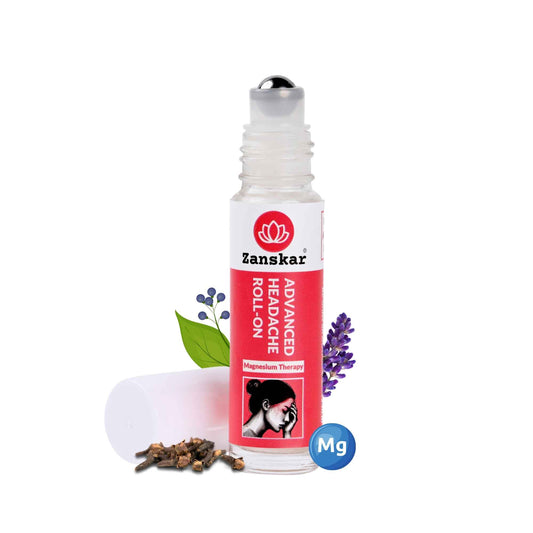
How to Fight Muscle Loss Due to Aging, also called as Sarcopenia?

Sarcopenia is a musculoskeletal disease in which muscle mass, strength, and performance are significantly compromised with age. Sarcopenia most commonly affects elderly and sedentary populations and patients who have co-morbidities that affect the musculoskeletal system or impair physical activity.
While it can decrease life expectancy and quality of life, there are actions you can take to prevent and even reverse the condition. This article explains what causes sarcopenia, and lists many ways you can fight it.
What Is Sarcopenia?
Sarcopenia literally means “lack of flesh.” It’s a condition of age-associated muscle degeneration that becomes more common in people over the age of 50.
After middle age, adults lose 3% of their muscle strength every year, on average. This limits their ability to perform many routine activities. Unfortunately, sarcopenia also shortens life expectancy in those it affects, compared to individuals with normal muscle strength.
Main Cause of Sarcopenia?
Sarcopenia is mostly caused by natural ageing of the body causing an imbalance between signals for muscle cell growth (anabolism) and signals for teardown (catabolism).
For example, growth hormones act with protein-destroying enzymes to keep muscle steady through a cycle of growth, stress or injury, destruction and then healing. This cycle is always occurring, and when things are in balance, muscle keeps its strength over time.
However, during aging, the body becomes resistant to the normal growth signals, tipping the balance toward catabolism and muscle loss.
Four Factors That Accelerate Muscle Loss
Although aging is the most common cause of sarcopenia, other factors can also trigger an imbalance between muscle anabolism and catabolism.
Although aging is the most common cause of sarcopenia, other factors can also trigger an imbalance between muscle anabolism and catabolism.
1. Immobility, Including a Sedentary Lifestyle
Disuse of muscle is one of the strongest triggers of sarcopenia, leading to faster muscle loss and increasing weakness.
Bed rest or immobilization after an injury or illness leads to rapid loss of muscle.
Although less dramatic, two to three weeks of decreased walking and other regular activity is also enough to decrease muscle mass and strength.
Periods of decreased activity can become a vicious cycle. Muscle strength decreases, resulting in greater fatigue and making it more difficult to return to normal activity.
2. Unbalanced Diet
A diet providing insufficient calories and protein results in weight loss and diminished muscle mass.
Unfortunately, low-calorie and low-protein diets become more common with aging, due to changes in sense of taste, problems with the teeth, gums and swallowing, or increased difficulty shopping and cooking.
To help prevent sarcopenia, scientists recommend consuming 25–30 grams of protein at each meal
3. Inflammation
After injury or illness, inflammation sends signals to the body to tear down and then rebuild the damaged groups of cells.
Chronic or long-term diseases can also result in inflammation that disrupts the normal balance of teardown and healing, resulting in muscle loss.
For example, a study of patients with long-term inflammation resulting from chronic obstructive pulmonary disease (COPD) also showed that patients had decreased muscle mass (source).
Examples of other diseases that cause long-term inflammation include RA, inflammatory bowel diseases and chronic infections like tuberculosis.
A study of 11,249 older adults found that blood levels of C-reactive protein, an indicator of inflammation, strongly predicted sarcopenia (Source).
4. Severe Stress
Sarcopenia is also more common in a number of other health conditions that increase stress on the body.
For example, people with chronic liver disease, and up to 20% of people with chronic heart failure, experience sarcopenia (Source).
In chronic kidney disease, stress on the body and decreased activity lead to muscle loss (Source).
How to Tell If You Have Sarcopenia
Early signs of sarcopenia include feeling physically weaker over time, and having more difficulty than usual lifting familiar objects.
A hand-grip-strength test has been used to help diagnose sarcopenia in studies, and may be used in some clinics.
Decreased strength might show itself in other ways too, including walking more slowly, becoming exhausted more easily and having less interest in being active.
Losing weight without trying can also be a sign of sarcopenia (Source).
Best Way to Reverse Sarcopenia
The strongest way to fight sarcopenia is to keep your muscles active (Source).
Combinations of aerobic exercise, resistance training and balance training can prevent and even reverse muscle loss. At least two to four exercise sessions weekly may be required to achieve these benefits (Source).
All types of exercise are beneficial, but some more than others.
1. Resistance Training
Resistance training includes weightlifting, pulling against resistance bands or moving part of the body against gravity.
When you perform resistance exercise, the tension on your muscle fibers results in growth signals that lead to increased strength. Resistance exercise also increases the actions of growth-promoting hormones.
These signals combine to cause muscle cells to grow and repair themselves, both by making new proteins and by turning on special muscle stem cells called “satellite cells,” which reinforce existing muscle.
Thanks to this process, resistance exercise is the most direct way to increase muscle mass and prevent its loss.
2. Aerobic Exercise
Sustained exercise that raises your heart rate, including aerobic exercise and endurance training, can also control sarcopenia.
Most studies of aerobic exercise for the treatment or prevention of sarcopenia have also included resistance and flexibility training as part of a combination exercise program.
3. Walking
Walking can also prevent and even reverse sarcopenia, and it’s an activity most people can do for free, anywhere they live.
A study found that six months of walking increased muscle mass, particularly in those who had low muscle mass. Another study found that faster walkers were less likely to have sarcopenia.
Four Nutrients That Fight Sarcopenia
If you’re deficient in calories, protein or certain vitamins and minerals, you may be at higher risk of muscle loss. However, even if you aren’t deficient, getting higher doses of some key nutrients can promote muscle growth or enhance the benefits of exercise.
1. Protein
Getting protein in your diet directly signals your muscle tissue to build and strengthen. As people age, their muscles become more resistant to this signal, so they need to consume more protein to increase muscle growth. The amino acid leucine is particularly important for regulating muscle growth. Rich sources of leucine include whey protein, meat, fish and eggs, as well as soy protein isolate.
One study found that when 33 men over age 70 consumed a meal containing at least 35 grams of protein, their muscle growth increased.
2. Vitamin D
Vitamin D deficiency is related to sarcopenia. Taking vitamin D supplements can increase muscle strength and reduce the risk of falling.
3. Omega-3 Fatty Acids
No matter how old you are, consuming omega-3 fatty acids will increase your muscle growth (Source). Part of this benefit may be due to the anti-inflammatory benefits of omega-3 fatty acids. Research has suggested that omega-3s might also signal muscle growth directly.
4. Creatine
Creatine is a small protein normally made in the liver. Although your body makes enough to prevent you from becoming deficient, creatine in the diet from meat or as a supplement may benefit your muscle growth.
Several studies investigated how taking a daily 5-gram creatine supplement affected adults with an average age of 64. When participants took the creatine, they got more benefits from resistance training compared to when they performed resistance training with no creatine.
Creatine is likely not beneficial for sarcopenia, if used alone without exercise.
The Bottom Line
Sarcopenia, the loss of muscle mass and strength, becomes more common with age and can decrease lifespan and quality of life.
Although some of the causes of sarcopenia are a natural consequence of aging, others are preventable. In fact, a healthy diet and regular exercise can reverse sarcopenia, increasing lifespan and quality of life.
Learn More About Zanskar Health
If you have joint or muscle pain that makes it hard to move, Zanskar offers the most advanced full stack pain relief solutions for you.
Now available to purchase, Zanskar® Advanced Pain Care Products have a unique formulation of natural bioactive ingredients and provide lasting relief from muscle and joint discomfort that you can feel good about. Get your fix before stocks run out - buy now.
You can also gain access to therapeutic exercises and stretches for your condition by downloading the Zanskar Health physiotherapy mobile app. Additionally, you’ll have a personal care team to guide, support, and tailor our program to you, including behavioral and nutritional coaching. Download our mobile app here 👉 download and track your exercise streak.
Medical Review: This article is written by Dr Nishtha Mittal (Senior Health Content Editor at Zanskar Health) and has been medically reviewed by the medical team at Zanskar Health. This article and its contents are provided for educational and informational purposes only and do not constitute medical advice or professional services specific to you or your medical condition.







